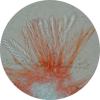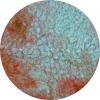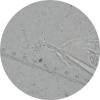
04-01-2026 17:45
 Stephen Martin Mifsud
Stephen Martin Mifsud
I was happy to find these orange asmocyetes which

03-01-2026 13:08
Niek SchrierHi all,We found groups of perithecia on a Lecanora

29-12-2025 17:44
Isabelle CharissouBonjour,J'aimerais savoir si d'autres personnes au

02-01-2026 17:43
MARICEL PATINOHi there, although I couldn't see the fruitbody, I

01-01-2026 18:35
Original loamy soil aside a artificial lake.The co

31-12-2025 19:27
Collected from loamy soil, at waterside (completel
 Hello everybody,
Hello everybody,Last week I found this discomycete growing on dead stem of Rubus fruticosus, but I can't
determinate. What's your advice?
Details:
Apothecia 0,3 – 0,5 mm. across. Sessile. Turbinate. With white discs that
become pink-red (with age?). I have seen
no hairs outside (what's necessary in order to belongs to the Hyaloscyphaceae –
I mean?).
Asci: IKI+. 70 – 80 x 6 – 7 mµ (with croziers- but I'm not certain).
Ectal excipulum of textura globulosa-angularis
Spores: 8 – 13 x 3 µm. curved, 1 septe
Parafyses without refractive guttules
Regards
Piet Bormans
Ps : dimensions ( x 1000) 1 = 1,01 µm

this is a Calycina, and one of those that turn red with age. Typical of the genus are the apical ring type (very different from Phaeohelotium which has Hymenoscyphus-type), and the mollosioid VBs in the paraphyses (not clearly seen on your photos).
I also think yours has croziers. I would compare this with my C. heterospora nom. prov. which had partly spores of different size within an ascus, but not always. This ispecies s related to C. parilis and C. herbarum but certainly not the same.
here a link
https://www.cubby.com/pl/heterospora/_c0652748b1c043108dde38f0e2fd6dab
Zotto

Piet










